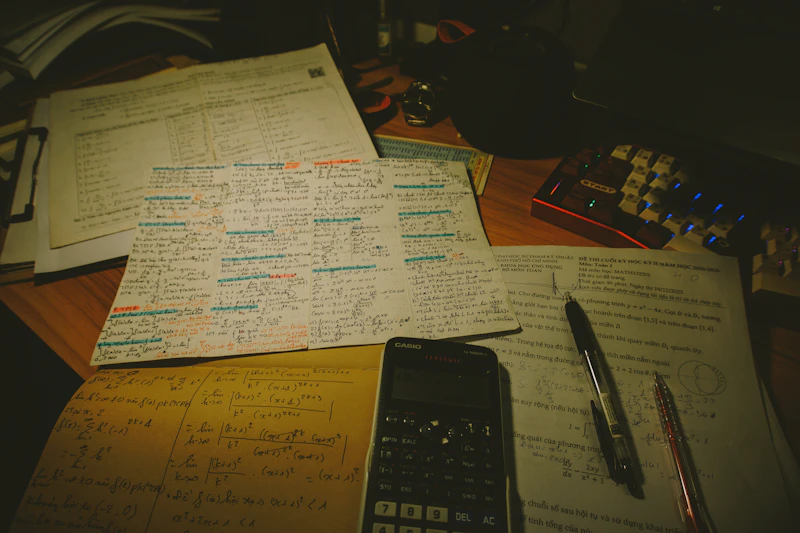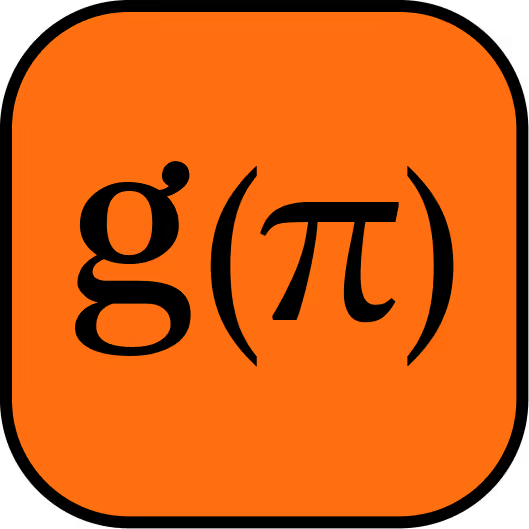
AI for Engineering Students: A Guide to Simulation, Lab Reports & Design | GPAI
AI for Engineering Students: A Guide to Simulation, Lab Reports
Your engineering education is an ascent. You start with the foundational principles of physics and calculus, then climb towards the complex, applied challenges that define modern engineering: designing systems, simulating their behavior, and analyzing real-world experimental data. This is where the problems become less about textbook answers and more about interpretation, design, and validation.At this advanced level, you need more than just a homework helper. You need an analytical partner. You need a tool that can verify your complex simulations, help you write professional lab reports, assist in your design process, and even help you manage group projects. This is the new frontier of AI for engineering students.This guide is for the student who wants to go beyond the basics. We will explore how AI tools like GPAI can become an indispensable part of your advanced engineering toolkit, helping you tackle everything from finite element analysis to professional lab report writing.
From Theory to Reality: Verifying Your Simulations
Engineering is increasingly reliant on simulation software like PSpice, LTspice, and FEA tools. A common and frustrating problem is when your simulation results don't match your theoretical hand calculations. An AI assistant is the perfect, unbiased partner to help you debug this discrepancy. By providing a screenshot of your schematic or a description of your setup, you can have the AI independently perform the theoretical calculations. This allows you to quickly determine if the error is in your mathematical model or your simulation setup, a critical skill for any engineer.
Learn More:
- Can AI Help Me with My PSpice / LTspice Simulation?
- Why Did My Finite Element Analysis (FEA) Fail? An AI Debugging Guide
The Engineer's Lab Notebook, Reimagined: Data, Graphs, and Reports
Lab work is at the heart of engineering, but documenting it is a major challenge. An AI can streamline this entire workflow, from analyzing raw data to writing the final report.
Analyzing and Visualizing Lab Data
You've collected your data, now you need to make sense of it. An AI can act as a powerful scientific graph maker. You can upload your raw data and use natural language to ask it to create publication-ready plots, complete with trendlines, error bars, and proper labeling. For more complex tasks, you can even get AI for statistical modeling to perform regression analysis on your data sets or generate the necessary MATLAB/R scripts to do it yourself.
Learn More:
- From Lab Data to Publication-Ready Graphs with an AI Assistant
- Can AI Write a MATLAB/R Script for Your Data Analysis Task?
- From Data Set to Insights: How AI Can Automate Your Stats Project
Writing Professional Lab Reports
A professional lab report requires clear, concise writing and rigorous data interpretation. An AI can be your writing assistant, helping you structure your arguments, draft your discussion section, and troubleshoot unexpected results. Whether it's a molecular biology lab report or a materials science report, the principles of clear communication are the same, and AI can help you hone that skill.
Learn More:
- How to Write a Flawless Lab Report with AI-Powered Data Analysis
- How to Write a Professional Engineering Lab Report with AI-Assisted Analysis
Solving the Core Problems of Every Engineering Discipline
Every branch of engineering has its own famously difficult courses. An AI solver trained on the deep principles of STEM can provide invaluable, step-by-step assistance across the curriculum.
For Chemical Engineers
Courses like Thermodynamics, Transport Phenomena, and Reactor Design are mathematically intensive. An AI can be your personal chemical engineering thermodynamics problems solver, moving beyond steam tables to help with full process simulations. It can also act as a transport phenomena solver for momentum, heat, and mass transfer problems, or help with complex reactor design calculations, automating the tedious integrations and differential equations.
Learn More:
- Chemical Engineering Thermodynamics: Beyond Steam Tables with AI
- Transport Phenomena Explained: An AI Solver for Momentum, Heat, and Mass Transfer
- Reactor Design and Kinetics: An AI Tool for Your Toughest Homework
- Process Control Homework Simplified with AI
For Mechanical Engineers
Dynamics, Heat Transfer, and Control Systems form the core of the mechanical engineering experience. You can use an AI as your personal engineering dynamics tutor to visualize vibrations, as a heat transfer problem solver for complex conduction/convection problems, or to understand the Laplace transforms and Bode plots in your control systems class.
Learn More:
- Your Ultimate Guide to Surviving Dynamics: From Kinematics to Vibrations
- Master Heat Transfer: An AI Tool for Conduction and Convection Problems
For Electrical and Computer Engineers
From microelectronics to semiconductors, ECE is a world of abstraction. An AI microelectronics circuit design help can derive transfer functions for complex amplifier and filter circuits. For device physics, it can help you understand and visualize abstract concepts like energy band diagrams, a crucial part of semiconductor physics.
Learn More:
- Mastering Microelectronics: An AI Tool for Amplifier and Filter Design
- Your Guide to Semiconductor Physics: How AI Simplifies Band Diagrams
The Collaborative Engineer: Managing Group Projects with AI
Modern engineering is a team sport. Your software engineering group project is your first taste of this reality. An AI can be a powerful tool for project management and documentation. You can use ai for agile development to generate user stories from a vague project description, and an ai code comment generator to ensure your team's code is well-documented and easy to integrate, helping you survive and thrive in a collaborative environment.
Learn More: Surviving Your Software Engineering Group Project with AI-Powered Tools
Level Up Your Engineering Toolkit
Success in your advanced engineering courses requires more than just knowing the formulas. It requires the ability to model, simulate, analyze, and communicate. By integrating AI into your workflow, you can automate the most tedious tasks, gain deeper insights from your data, and focus on developing the high-level engineering judgment that will define your career.[Ready to take your engineering projects to the next level? Try GPAI today. From simulation to lab reports, get the advanced help you need. Sign up now for 100 free credits.]








